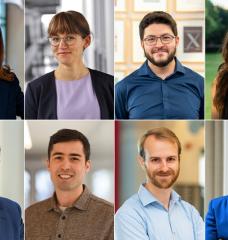
While silicon solar panels currently dominate the market, silicon itself is not the best material to use for solar. In order to absorb and convert photons from the red and infrared ends of of the spectrum, the panels must be rather thick and still only achieve less than 23% efficiency. Perovskite, a crystalline-structured material which converts light into electricity, is able to work with different parts of the spectrum and potentially reach 33%-43% efficiency. In this article James Temple, MIT Technology Review's senior editor for energy, explores the rise of the perovskite solar panel, the questions surrounding its durability, and the potential benefits it would be able to bring to the solar industry.
Read the full article at: https://www.technologyreview.com/s/613524/these-flexible-solar-cells-br…
Image courtesy of Oxford PV






